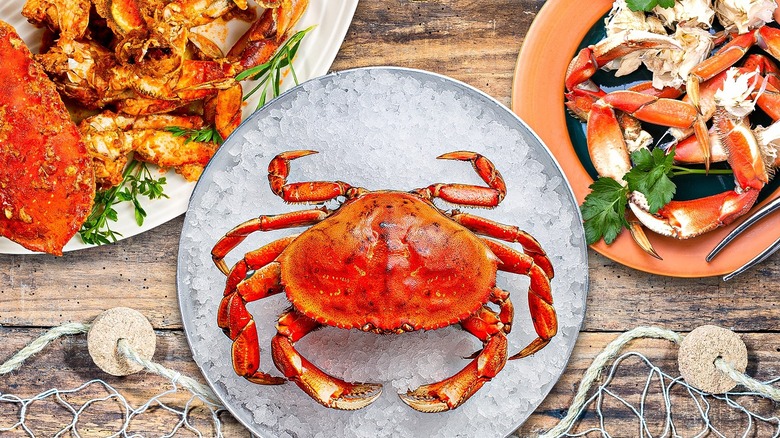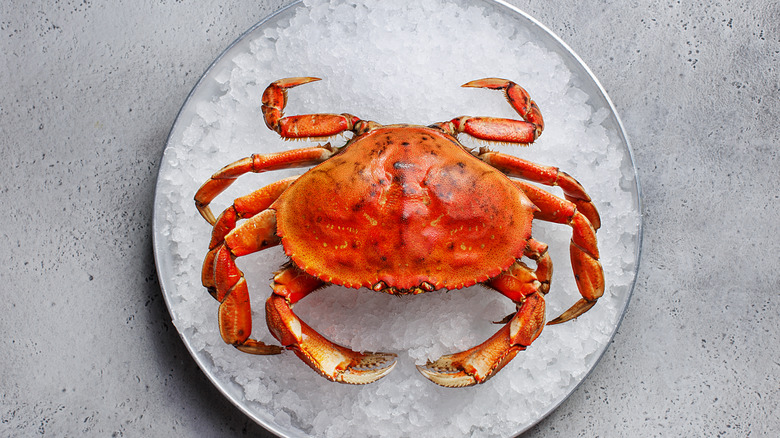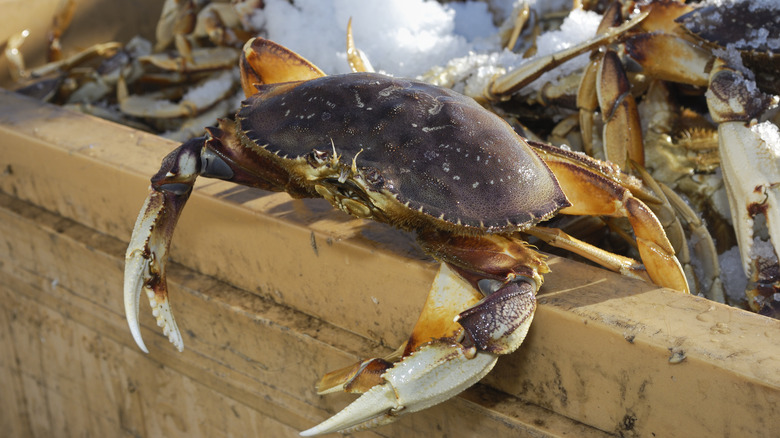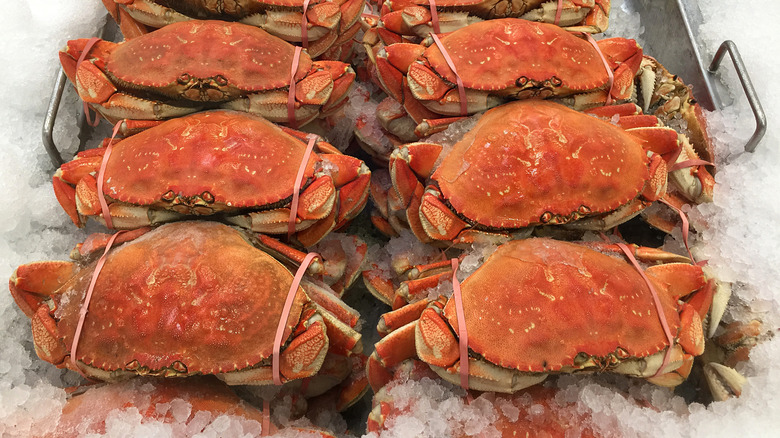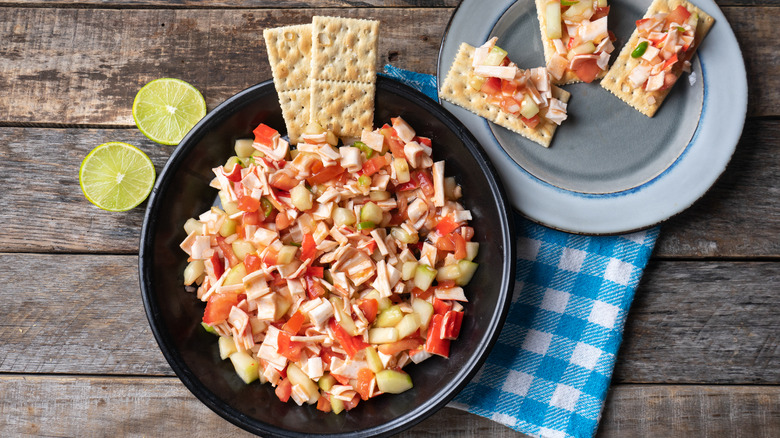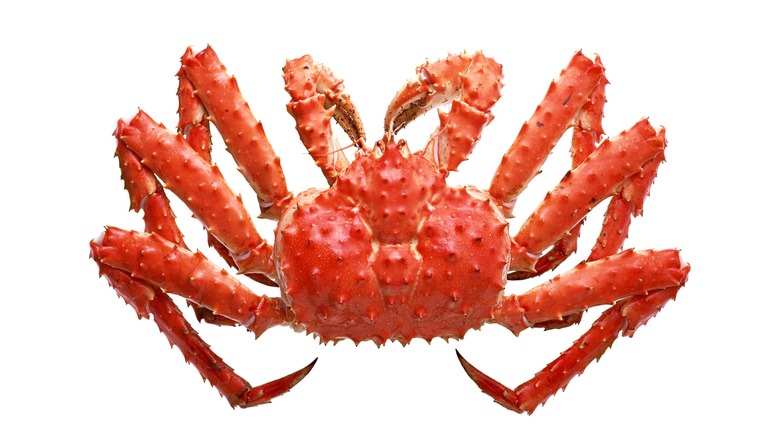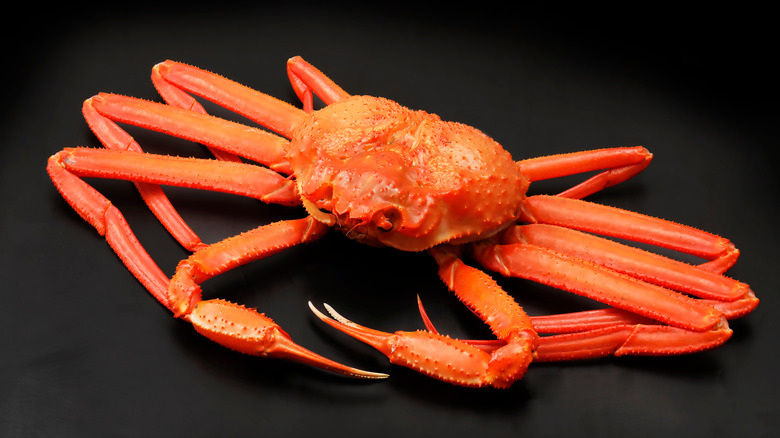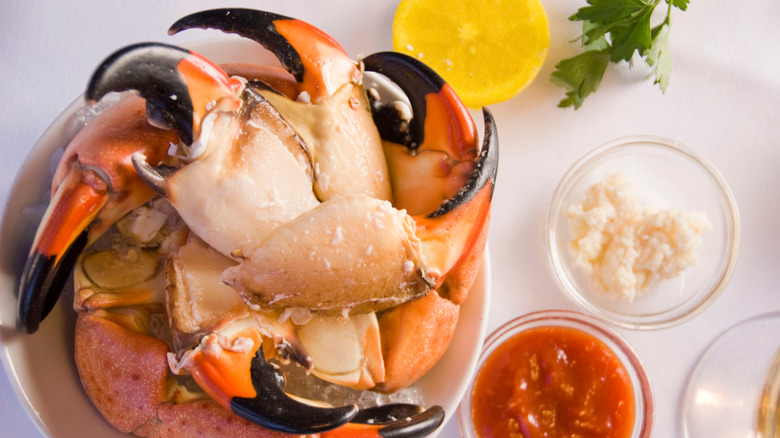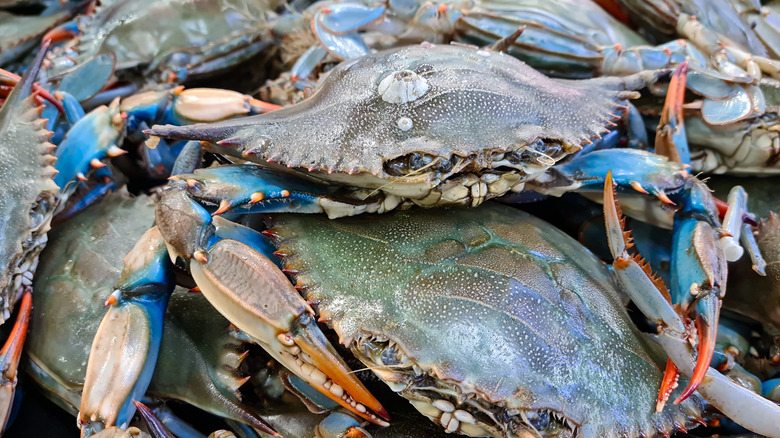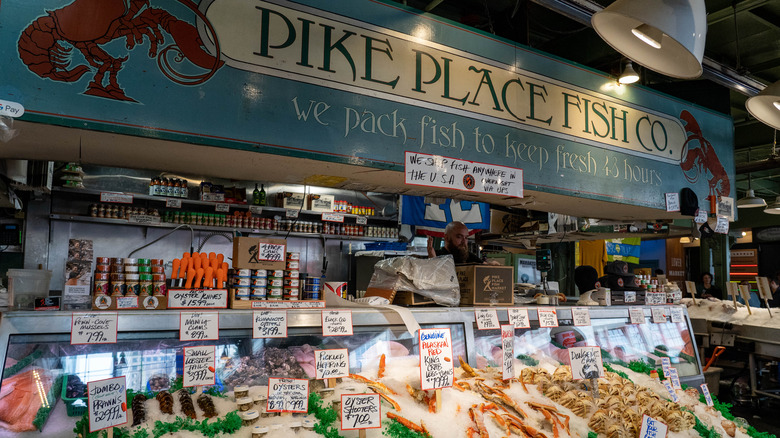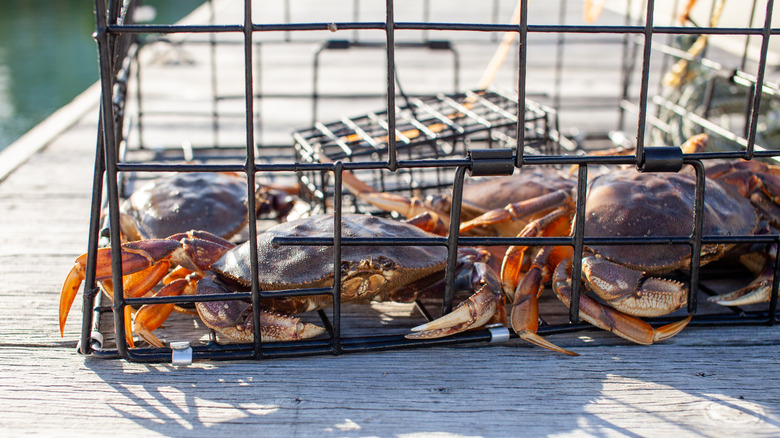What Makes Dungeness Crab Unique
Treasure can be found in all sorts of unexpected places — even along the murky ocean floor. After all, the rough, rocky coastline stretching from Alaska to California is home to one of the most delicious and sought-after seafood delicacies in the United States: the Dungeness crab. Millions of pounds of Dungeness crabs are brought in by fisheries every year, and end up starring in some of the finest seafood dishes throughout the world.
Named after the town of Dungeness, Washington — where people first began fishing for these crustaceans in the 1800s – Dungeness crab meat is prized by chefs and seafood connoisseurs alike for its subtle sweetness, and flaky, delicate texture. Since Dungeness crabs are larger than several similar crab species, as well, the meat is often served in big, flavorful chunks — and, consequently, doesn't necessarily need a heavy helping of additional herbs and spices.
If your mouth isn't watering yet, well ... it will be soon. Make sure you have a lemon wedge and some butter handy as you read on, and find out what makes Dungeness crab so unique.
How is Dungeness crab caught?
It's easy to get lost in the moment when you're biting into a chunk of delectable Dungeness crab meat. Still, it's worth pausing to express gratitude toward the crab fishermen (and women) who caught that meal for you. Crab fishing is an immensely challenging business, in part because Dungeness crabs live along the muddy seabed off the coast of the Pacific Northwest at depths around 300 feet on average.
Dungeness crabs are usually caught using crab pots, which are baited traps made with wire (thus preventing the crabs from escaping once they've been lured in by the bait). But hauling a crab pot up from the ocean floor is no easy task since the traps can become quite heavy once filled with crabs. Additionally, Dungeness crab season begins in November and runs through the winter — coinciding with the nasty seasonal weather often found in that coastal region of the U.S. and Canada.
Now, the fact that crab fishing is so dangerous isn't exactly a secret, of course (as demonstrated by the ominously named "The Deadliest Catch" television series). But given the death toll for Dungeness crab fishermen was nearly 78 times higher than that of the average U.S. worker in 2016? The sacrifice made by Dungeness crab fisherman is worth keeping in mind while you savor every juicy morsel of that crab cake.
What does Dungeness crab taste like?
Seafood lovers likely already know that Dungeness crab is one of the most delicious species to eat. The unique taste of these valuable critters provides a nutty sweetness balanced out by a hint of briny saltiness — the sort of flavor profile that reminds diners of their meal's oceanic origins. This delicate combination of flavors means the Dungeness crab can shine in simple preparations. In other words, you don't want to smother this variety of crab in too many bold flavors, as it may eclipse the naturally complex and delicious notes of the shellfish.
You can ingest meat from the claws, legs, and body of a Dungeness crab, with each part offering a slightly different taste and texture. The leg meat is somewhat saltier than the sweeter-tasting claws (which also offer larger chunks of meat); and though the body provides the most edible meat overall, it's a bit harder to obtain than what's available in the crab's claws or legs. Additionally, after you've finished eating a Dungeness crab's meat, you can boil the shells to make a rich and savory seafood stock to use in various crab-based stews (such as chowder or bisque).
How to cook with Dungeness crab
Given there are pros and cons to each method for cooking crab, ensuring you get the most out of your Dungeness crab purchase requires some basic crab prep knowledge. One of the most common preparations for Dungeness crab — particularly when it's fresh (and still alive) — involves placing the whole crustacean into a pot of boiling (and salted) water for seven minutes or so.
Be sure to round down on the estimated time if you're eyeballing the crab during cooking. A somewhat raw Dungeness crab can always be placed back into boiling water — but there's no saving a shellfish that's been overcooked. Once your seafood has finished cooking, place the Dungeness crab in or under cold water, then clean it by removing the gills, mandible, and carapace. For a simple yet attractive presentation, consider cracking the crab in half, and serving it with lemon and butter.
Whether you're using a live-and-kicking Dungeness crab, or one that's frozen (and presumably pre-cooked), you'll want to submerge your crab entirely in boiling water so it cooks evenly. And if you're eager to take further advantage of the delightfully delicate texture and taste of Dungeness crab, try using citrus zest to enhance the crab's natural flavor.
How to store Dungeness crab
When cooking with still-living Dungeness crabs, keeping them alive — and safe to eat — is the name of the game. In that regard, when you've got live Dungeness crabs in your kitchen that you're ready to devour, you should cook them immediately. However, if you don't plan on eating your crabs for some time, there are several ways to prevent them from dying in the short term.
You can keep crabs alive for roughly 8 hours by storing them in a ventilated cooler that's been partially filled with salt water. You can also store crabs in the refrigerator for a day or so, as long as you open the door every so often to give them some air (otherwise they'll likely suffocate and die). You'll want to avoid storing (or eating) deceased crabs more than an hour after they perish, though, as crab meat may become toxic soon after dying.
Thankfully, once you've cooked your Dungeness crab, it's much simpler to keep it safe and edible until you're hungry for shellfish. In fact, a whole cooked Dungeness crab can be kept in the fridge for up to three days, and may last in the freezer for an entire year.
Where to buy Dungeness crab
If you consider yourself seaworthy, the best way to get your hands on a fresh Dungeness crab is to catch it yourself. But seeing how most of us don't own a boat or live in the Pacific Northwest, the next best thing is to buy fresh, live crabs from your local seafood purveyor. If that's not an option, you can purchase them from various online seafood vendors, which will ship a box of Dungeness crabs to your doorstep.
The price of Dungeness crab tends to vary. But generally, a whole, living crab (that weighs 2 pounds) will cost somewhere between $24 and $45 dollars. Bear in mind that only ¼ of each Dungeness crab is comprised of edible meat, so you'll probably need more than one to feed a whole family. To save a few bucks, you can also buy Dungeness crab pre-cooked and frozen, then reheat it at home; or, if you don't want to deal with the mess of cracking your crab legs, you can buy cans of Dungeness crab meat, too.
No matter which way you decide to get your hands on this sweet, flaky crab meat, it's unlikely to be cheap. But when you're biting into the buttery heaven that is Dungeness crab? You won't have any regrets, either.
Nutritional information for Dungeness crab
Scuttling around the ocean floor all day is bound to build some muscle, which is why Dungeness crabs are packed full of protein. They're also low in fat and don't have any carbohydrates — so if you're looking for a lean seafood option without a fishy taste? Dungeness crab might be for you. Dungeness crabs contain essential nutrients like iron, selenium, folate, and zinc, as well as vitamin B12. It's also lower in mercury than many other seafood options on the market.
Of course, the potential health benefits of Dungeness crabs depend almost entirely on how you cook them. If you want to keep your crab dinner on the light side, you can prepare something with fresh ingredients, like crab ceviche. If you decide to go with a heavier preparation, however, like classic Maryland crab cakes? Be aware that the butter and cream — which makes these crispy, succulent nuggets so deliciously decadent — are bound to add some extra calories to your meal.
Dungeness crab vs. king crab
It's no wonder why the king crab is so named: The reigning monarch of crustaceans is the largest commercially harvested crab on the market. Unsurprisingly, then, king crabs are larger than Dungeness crabs. For instance, Dungeness crabs have a 9-inch width on average and rarely weigh more than 3 pounds. By comparison, king crabs can grow up to 6 feet wide, with a weight range between 6 and 20 pounds (it's safe to say you wouldn't want to meet a king crab in a dark alley).
In terms of flavor, king crab is a touch sweeter than the somewhat saltier Dungeness crab, with meat that's less tender and flaky than Dungeness crab. Additionally, king crab season begins a bit earlier than Dungeness crab season, so which type of shellfish you decide to order may depend on the time of year. Since king crab tends to be drastically more expensive than Dungeness crab, as well, be prepared to shell out some cash (no pun intended) if you're set on eating crab royalty.
Dungeness crab vs. snow crab
To some, there's no crab like snow crab. Hailing from the frigid waters of the northern Atlantic and Pacific oceans, these crustaceans have a slightly smaller shell than the Dungeness crab — though the snow crab's longer legs mean they weigh more than their Dungeness cousins on average. Compared to the sweeter, nuttier taste found in Dungeness crabs, snow crabs have a generally milder flavor. This means snow crab meat may be a bit more versatile to cook with, as it's less likely than Dungeness crab to dominate a dish's flavor profile.
Unfortunately, choosing between these two crab varieties has become more difficult in recent years, given the notable decline in wild snow crab populations found off the Alaskan coast. The situation was so dire in 2022 that Alaska canceled its snow crab season entirely that year hoping to give the shellfish a chance to replenish its numbers.
Of course, since some speculate the decrease in snow crabs is due to warmer water temperatures caused by a changing climate, it's difficult to predict whether this problem will persist or resolve itself. Either way, it seems the slightly pricier cost of snow crabs compared to Dungeness crabs isn't apt to change in the near future.
Dungeness crab vs. stone crab
Not unlike Celia Cruz and Gloria Estefan, stone crabs1 enjoy celebrity status in Florida. Some in the state even celebrate the beginning of stone crab season in October with festivals, like the aptly named Stone Crab Festival held annually in Naples, Florida. Additionally, while Dungeness crabs are caught and sold whole, stone crabs have the unique ability to re-grow their claws. This means stone crab claws probably aren't going anywhere, as fishermen can harvest a crab's claw, then return the limbless creature to the ocean to continue scuttling around.
Beyond divergent fishing techniques, stone crabs feature a richer overall taste compared to the low-key flavors found in Dungeness crabs , as well as a firmer texture. Stone crabs also feature a naturally bold sweetness worthy of highlighting (rather than hiding). Hence, these tropical crustaceans are often served cold with just a mustard dipping sauce and lemon wedge. Whether you're preparing a similarly simple recipe for yourself, though, or dining out on your next trip to the Sunshine State, be sure to get your paws on some stone crab claws.
Dungeness crab vs. blue crab
With a long culinary history in the United States (particularly in the mid-Atlantic region), blue crab isn't just a food — it's a piece of cultural heritage. Native to the Atlantic seaboard, blue crabs — so named for self-evident reasons — have featured prominently in the gastronomic lineage of American dining. This includes the indigenous origins of the crab cake, a staple of Maryland cuisine made by frying a mixture of blue crab meat with vegetables and corn meal.
It's not merely the history (or hue) that sets blue crabs apart from Dungeness crabs, though. Blue crabs are smaller than their West Coast relatives (weighing no more than 2 pounds), with shells that average around 7 inches in width. The blue crab's meat tastes a bit more seawater-forward than Dungeness crabs, as well.
Beyond crab cakes, blue crab meat is often utilized in soups and stews, or on top of select sushi rolls. And while Dungeness crab season runs from late fall through spring, blue crab season crests during the summer months — meaning they're a perfect catch for your next outdoor seafood boil.
Dungeness crabs are the pride of the Pacific Northwest
The Pacific Northwest is known for its rainy weather, breathtaking landscapes, and, of course, its fresh and delicious seafood. Naturally, Dungeness crab is an integral component of the culinary identity of the region – and has been for thousands of years. In fact, Dungeness crabs were part of many indigenous peoples' diets before the arrival of settlers in the western U.S., as they would trek into the water along the coast to catch them.
Today, some of the best seafood restaurants in the Pacific Northwest are known for serving up this sweet, nutty crab in all its flaky, delicate glory. Additionally, the Dungeness crab makes up a significant part of the regional economy, with many coastal towns situated in the Pacific Northwest relying on crab fishing as a staple of their economies. In Oregon, for example, the commercial fishing industry brought in $231 million in 2022 – which was significantly less than previous years due to a delay in the start of Dungeness crab fishing season.
Dungeness crab is a sustainable choice
While many types of seafood are threatened by overfishing and environmental degradation, the population of Dungeness crabs along the coast of the Pacific Northwest has remained stable in recent years. This is due to intense regulations imposed on crab fisheries, such as only allowing male crabs that are larger than a specified size to be harvested. This ensures the crabs have had time to begin reproducing before they've been caught (among other practices designed to ensure the species isn't overfished).
These protective measures have resulted in a Dungeness crab population that's steady (and potentially even increasing) along the coasts of Northern California, Oregon, and Washington as of 2023. Many scientists warn that a warming climate could have an impact on populations in the future, but for the time being? Rest assured that Dungeness crab is a sustainable choice when it comes to eating seafood — and one you can feel comfortable buying.
